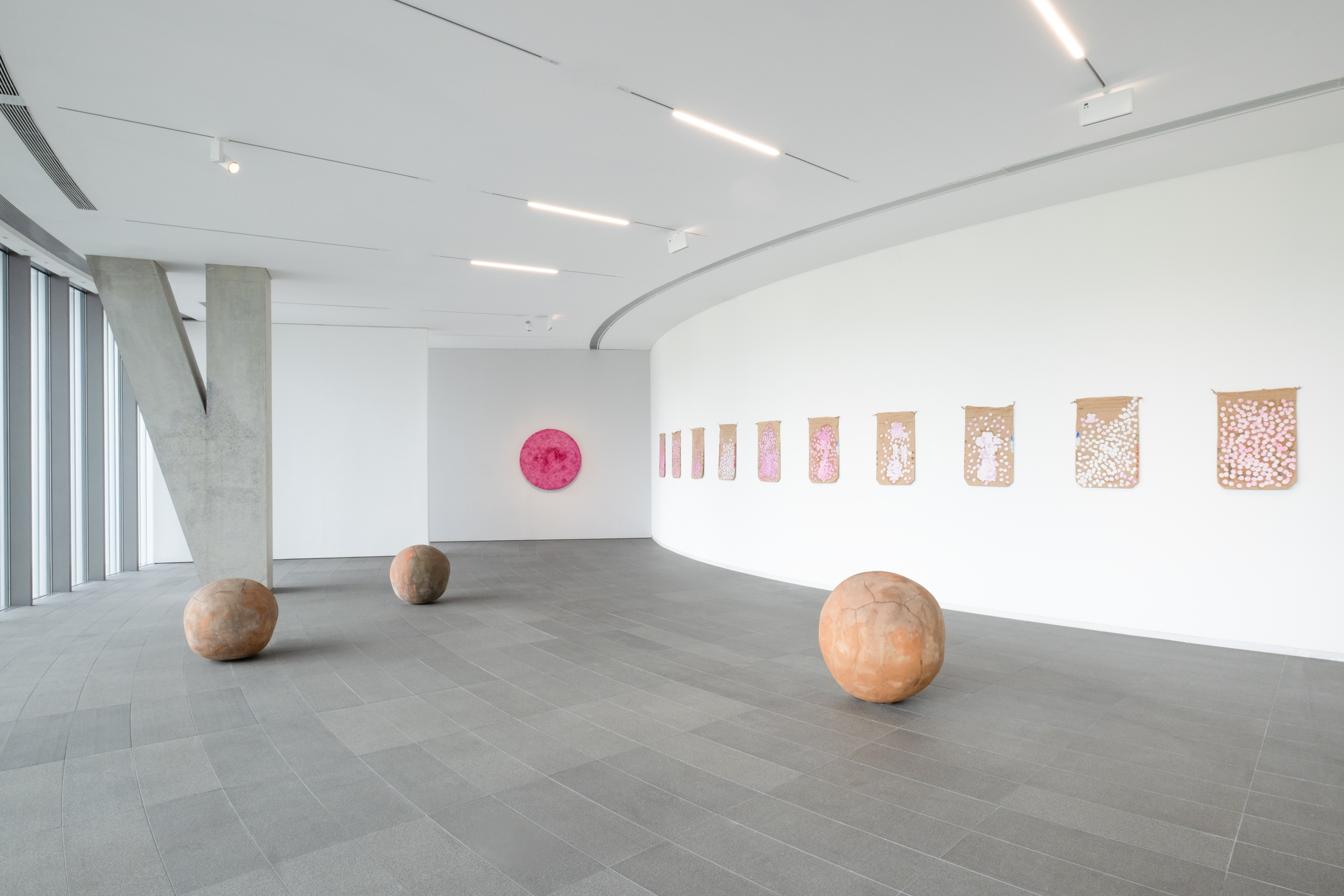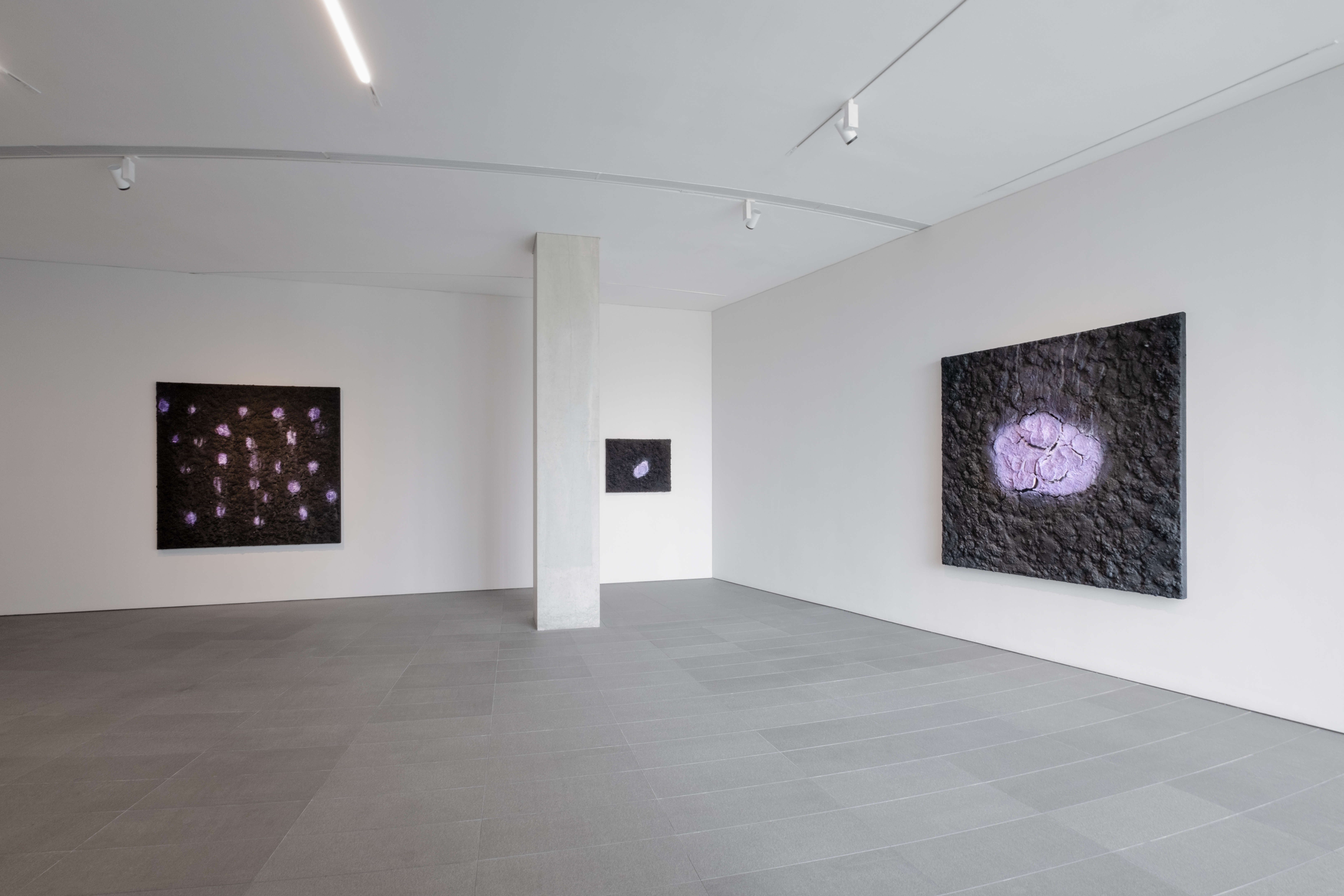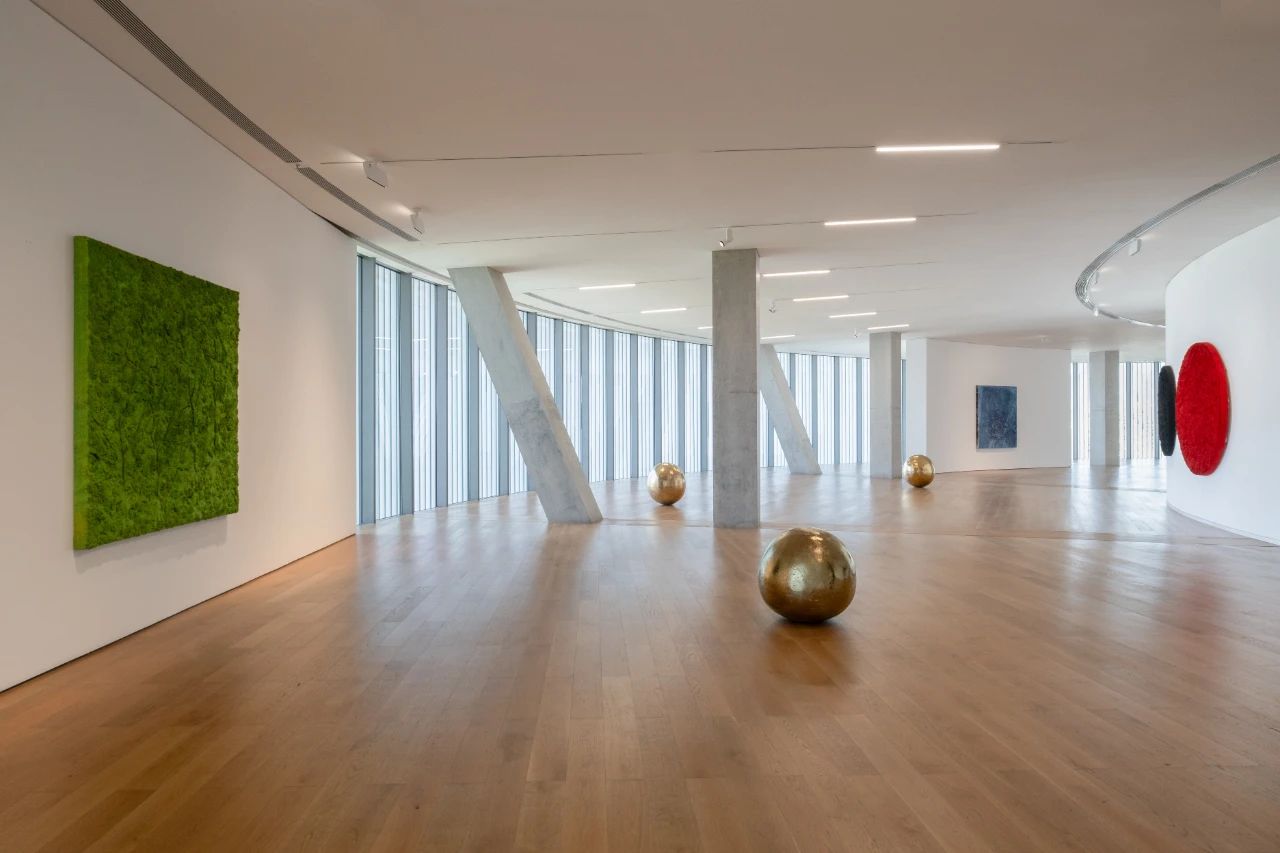Overview
From November 10, 2024, He Art Museum (HEM) will present Bosco Sodi's largest solo exhibition in Asia. Co-curated by the artist and HEM, the exhibition will span three floors of the museum, presenting over 100 works from the artist's career including paintings, sculptures and site-specific installations.
Bosco Sodi (b. 1970, Mexico City) reveals the emotive power embodied in the essential simplicity of raw material. The artist is known for his richly textured, vividly colored large-scale sawdust paintings and sculptures made from clay and volcanic rocks. Greatly influenced by the aesthetic philosophy of Wabi Sabi, Sodi focuses on material exploration, the creative gesture, and the spiritual connection between the artist and his work. His stylistic influences range from Art Informel, looking to artists such as Antoni Tàpies and Jean Dubuffet, to master colorists such as Willem de Kooning and Mark Rothko, and the bright hues of Mexico.
Rendered in powerful, saturated hues, Sodi’s paintings blend raw pigment with sawdust, wood, pulp, natural fibers, and glue to create their dense surfaces. As the layers of material dry, structures form without the guidance or intervention of the artist. These fissured “landscapes” are both products of the artist’s careful balance of control and chaos, collaborating with the unpredictable forces of our natural world.
Using bare hands and centuries-old techniques, Sodi’s gestures transform the banality of material into the transcendental. His gold and ceramic glazed rock sculptures emanate a powerful physicality and symbolically signify holiness and revelation in the timeless lineage of the ancient Mayan and Aztec stelae. As they are fired, the volcanic rocks metamorphose into sculptural objects that unite geological processes with traditional and contemporary art-making techniques. Sodi’s works are memorials and relics, incarnating his exploration and conversation with materials that come directly from the earth.
The exhibition will also feature a site-specific installation made by thousands of bricks created entirely by Foshan’s ancient Dragon Kiln Nanfeng (Southerly Wind), named for its dragon-like form as it sprawls along the hillside in the city center. With over 500 years of history, it is one of the oldest kilns still in use worldwide. Making pottery with Dragon Kiln requires meticulous temperature controlled by local artisans, and together with the unpredictable effects of wood ash glaze, each brick is imbued with unique crates, textures and colors. This harmonious yet capricious interplay between human craftsmanship and natural materials develops Sodi’s use of traditional brick kilns in his studios in Oaxaca and Mexico City, perfectly embodying his creative philosophy of process and experimentation. The use of clay bricks also echoes major international installations by the artist including Muro (New York, 2017) and Atlantes (Oaxaca, 2019).
Sodi’s creations will be in dialogue with the minimalist architectural space of He Art Museum designed by Tadao Ando. As the constantly changing natural light casts upon his works, the museum will resemble a temple that celebrates thousands of years of intertwined relationship between human and the earth.
Bosco Sodi (b. 1970, Mexico City) reveals the emotive power embodied in the essential simplicity of raw material. The artist is known for his richly textured, vividly colored large-scale sawdust paintings and sculptures made from clay and volcanic rocks. Greatly influenced by the aesthetic philosophy of Wabi Sabi, Sodi focuses on material exploration, the creative gesture, and the spiritual connection between the artist and his work. His stylistic influences range from Art Informel, looking to artists such as Antoni Tàpies and Jean Dubuffet, to master colorists such as Willem de Kooning and Mark Rothko, and the bright hues of Mexico.
Rendered in powerful, saturated hues, Sodi’s paintings blend raw pigment with sawdust, wood, pulp, natural fibers, and glue to create their dense surfaces. As the layers of material dry, structures form without the guidance or intervention of the artist. These fissured “landscapes” are both products of the artist’s careful balance of control and chaos, collaborating with the unpredictable forces of our natural world.
Using bare hands and centuries-old techniques, Sodi’s gestures transform the banality of material into the transcendental. His gold and ceramic glazed rock sculptures emanate a powerful physicality and symbolically signify holiness and revelation in the timeless lineage of the ancient Mayan and Aztec stelae. As they are fired, the volcanic rocks metamorphose into sculptural objects that unite geological processes with traditional and contemporary art-making techniques. Sodi’s works are memorials and relics, incarnating his exploration and conversation with materials that come directly from the earth.
The exhibition will also feature a site-specific installation made by thousands of bricks created entirely by Foshan’s ancient Dragon Kiln Nanfeng (Southerly Wind), named for its dragon-like form as it sprawls along the hillside in the city center. With over 500 years of history, it is one of the oldest kilns still in use worldwide. Making pottery with Dragon Kiln requires meticulous temperature controlled by local artisans, and together with the unpredictable effects of wood ash glaze, each brick is imbued with unique crates, textures and colors. This harmonious yet capricious interplay between human craftsmanship and natural materials develops Sodi’s use of traditional brick kilns in his studios in Oaxaca and Mexico City, perfectly embodying his creative philosophy of process and experimentation. The use of clay bricks also echoes major international installations by the artist including Muro (New York, 2017) and Atlantes (Oaxaca, 2019).
Sodi’s creations will be in dialogue with the minimalist architectural space of He Art Museum designed by Tadao Ando. As the constantly changing natural light casts upon his works, the museum will resemble a temple that celebrates thousands of years of intertwined relationship between human and the earth.







